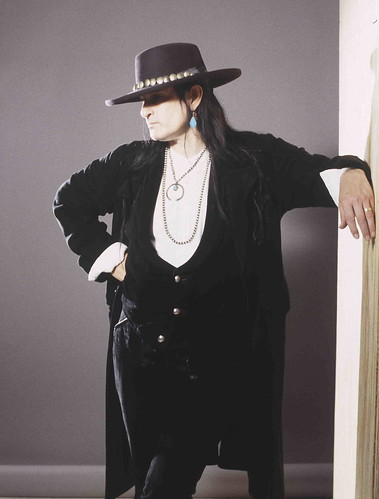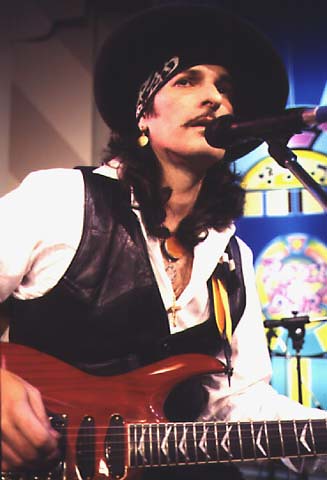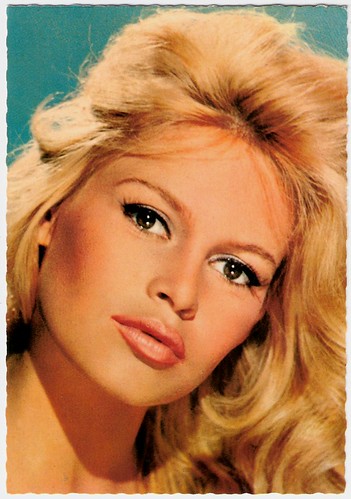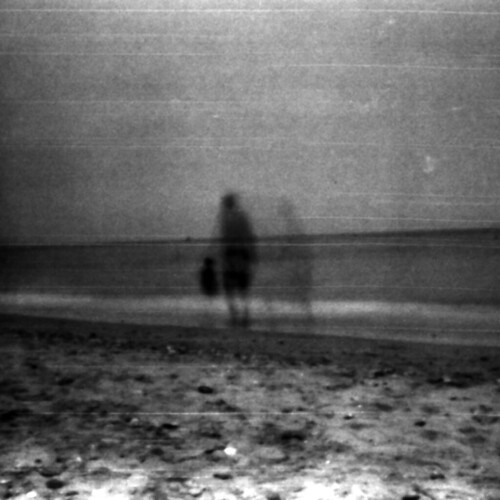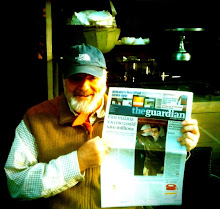Saturday, 8 August 2009
Jean Gabin
French postcard by A.N., Paris, nr. 1160. Photo: Films Osso.
French actor and war hero Jean Gabin (1904-1976) was one of the great stars of the European cinema. In the 1930’s he became the personification of the tragic romantic hero of the poetic realist film. Whether he played the legionnaire (Gueule d'amour ), the deserter (Le Quai des brumes) or the head gangster (Pépé le Moko), Gabin was impeccable, bringing a tragic humanity to each of his appearances which the public adored. After the war Gabin was reborn as a tough anti-hero, set in his beliefs, feared and respected by all, the Godfather of French cinema.
Jean Gabin was born Jean-Alexis Gabin Moncorgé in Paris, he grew up in the village of Mériel in the Seine-et-Oise département, about 35 km north of Paris. His parents, Ferdinand Moncorgé and Hélène Petit, were entertainers, performing in local cafés. Jean worked as a laborer, but from an early age, entertainment was in his blood. At 18, he took a turn at the Folies-Bergère. He then appeared in reviews and operettas, singing and dancing, and becoming famous for his imitation of Maurice Chevalier. Through a chance meeting with the singer Mistinguett in 1928, he was given a spot at the Moulin-Rouge. This led to uncredited parts in two silent sketch films Ohé! Les valises (1928) and Les Lions (1928). Two years later, he easily made the transition to talkies in the Pathé Frères production Chacun sa Chance (1930, René Pujol, Hans Steinhoff) where he appeared with Gaby Basset, his first wife, whom he married in 1927. Gabin made more than a dozen films over the next four years, including Méphisto (1930, Henri Debain, Georges Vinter), Tout ça ne vaut pas l'amour (1931, Jacques Tourneur), Coeur de lilas/Lilac (1932, Anatole Litvak), Les gaietés de l'escadron/Fun in Barracks (1932, Maurice Tourneur), La Foule hurle (1932, John Daumery, Howard Hawks) and Du haut en bas/From Top to Bottom (1933, Georg Wilhelm Pabst). However, he only gained real recognition for his performance in Maria Chapdelaine (1934, Julien Duvivier) starring Madeleine Renaud. Cast as a romantic hero opposite Annabella in the war drama La Bandera/Escape from Yesterday (1936, Julien Duvivier) established Gabin as a major star. He teamed up with Julien Duvivier again, this time in La belle équipe/They Were Five (1936) and in the highly successful Pépé le Moko (1937) that became one of the top grossing films of 1937 worldwide; its popularity brought Gabin international recognition. That same year, he starred in the masterpiece La grande Illusion/The Grand Illusion (1937, Jean Renoir) an anti-war film that was a huge box office success and given universal critical acclaim, even running at a New York City theatre for an unprecedented six months. This was followed by another one of Renoir's great successes: La bête humaine/The Human Beast (1938, Jean Renoir), a film noir tragedy based on the novel by Émile Zola and starring Gabin and Simone Simon, as well as Le quai des brumes/Port of Shadows (1938) and Le jour se lève/Daybreak (1939) two of director Marcel Carné's most acclaimed films.
Flooded with offers from Hollywood, for a time Jean Gabin turned them all down until the outbreak of World War II. Following the German occupation of France, he joined Jean Renoir and Julien Duvivier in the United States. Divorced from his second wife Suzanne Mauchain in 1939, during his time in Hollywood, Gabin began a torrid romance with actress Marlene Dietrich. His Hollywood film career proved to be less successful: he made two films, Moon Tide (1942, Archie Mayo) and The Impostor (1944, Julien Duvivier), both of which were flops. Scheduled to star in an RKO film, at the last minute he demanded Dietrich be given the co-starring role. The studio refused. After Gabin remained steadfast in his demand, he was fired, and the film project was shelved. Undaunted, he enlisted in 1943 as a tank commander in the Forces françaises libres. He earned the Médaille Militaire and a Croix de Guerre for his wartime valor fighting with the Allies in North Africa. Following D-Day, Gabin was part of the military contingent that entered a liberated Paris. Captured on film by the media is a scene where an anxious Marlene Dietrich is waiting in the crowd when she spots Gabin onboard a battle tank and rushes to him. In 1946, Gabin was hired by Marcel Carné to star in the film, Les Portes de la Nuit, but his conduct got him fired again. He then found a French producer and director willing to cast him and Marlene Dietrich together, but their film Martin Roumagnac/The Room Upstairs (1946,Georges Lacombe) was not a success and their personal relationship soon ended. Following another box office failure in 1947, Gabin returned to the stage, but there too, the production was another financial disaster. Nevertheless, he was cast in the lead role of Au-Delà Des Grilles/The Walls of Malapaga (1949, René Clément) that won the Academy Award for Best Foreign Language Film. Despite this recognition, the film did not do well at the French box office, and the next five years brought little more than repeated box office failures.
Jean Gabin's career seemed headed for oblivion. In 1953 he was the male winner of the Lemon Prize, awarded by French journalists to the nastiest French actors. However, he made a comeback in the classic policier Touchez pas au grisbi/Don't Touch the Loot (1954, Jacques Becker). His performance earned him critical acclaim, and the film was a very profitable international success. Later, he worked once again with Jean Renoir in French Cancan (1955), with María Félix and Françoise Arnoul. Over the next twenty years, Gabin made close to 50 more films, most of them very successful commercially and critically, including many for Gafer Films, his production partnership with fellow actor Fernandel. One of his most popular personalities was inspector Maigret from the detective novels by Georges Simenon in Maigret tend un piège/Maigret Sets a Trap (1958, Jean Delannoy) and Maigret et l'affaire Saint-Fiacre/Maigret and the St. Fiacre Case (1959, Jean Delannoy). But he was also able to play all other kind of people: aristocrats, farmers, thieves and managers. With age, a new Gabin persona emerged, more solid, more self-assured, yet always human. His co-stars included French cinema stars as his good friend Lino Ventura in Razzia sur la Chnouf/Razzia (1955, Henri Decoin), Bourvil in La traversée de Paris/The Trip Across Paris (1956, Claude Autant-Lara), Brigitte Bardot in En cas de malheur/In Case of Adversity (1958, Claude Autant-Lara), Jean-Paul Belmondo in Un singe en hiver/A Monkey in Winter (1962, Henri Verneuil), Simone Signoret in Le Chat/The Cat (1971, Pierre Granier-Deferre), and Alain Delon in Mélodie en sous-sol/Any Number Can Win (1963, Henri Verneuil), Le Clan des Siciliens/The Sicilian Clan (1969, Henri Verneuil), and Deux hommes dans la ville/Two Men in Town (1973, José Giovanni). In 1960 Gabin was made an officer of France's Legion of Honor. Gabin never stopped working and when death surprised him in 1976 he was still an institution for the French audience.His last film was the comedy L'Année sainte/Holy Year (1976, Jean Girault). Jean Gabin died in 1976 of a heart attack in the Parisian suburb of Neuilly-sur-Seine. His body was cremated and with full military honours, his ashes were dispersed into the sea from the military ship Détroyat. In 1949, he had married Dominique Fournier, with whom he would share the rest of his life. He bought a sprawling farm in Normandy, and was as contented in his life as the country farmer as he was acting in front of a film camera. He had five children. The Musée Jean Gabin in his native town, Mériel, contains his story and features his war and film memorabilia.
Brigitte Bardot
Dutch postcard by Gebr. Spanjersberg N.V., Rotterdam.
Brigitte Bardot (1934) was the sex kitten of the European cinema. She was every man's idea of the girl he'd like to meet in Paris.

